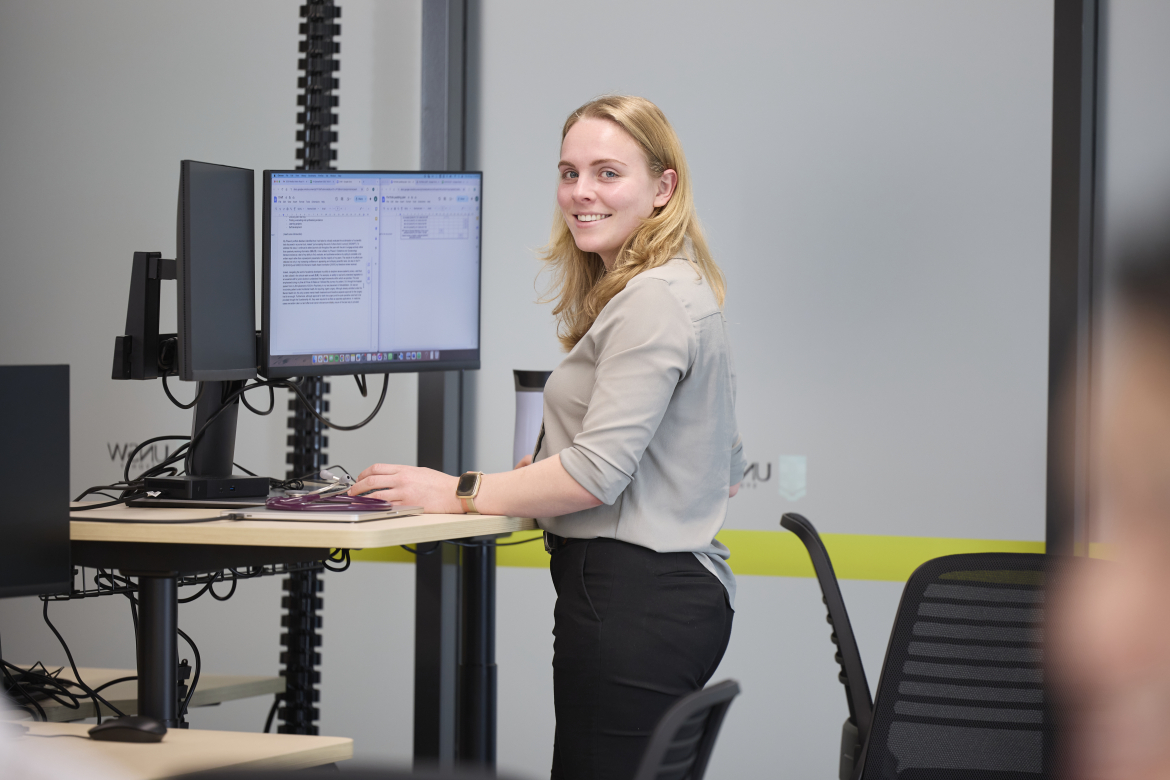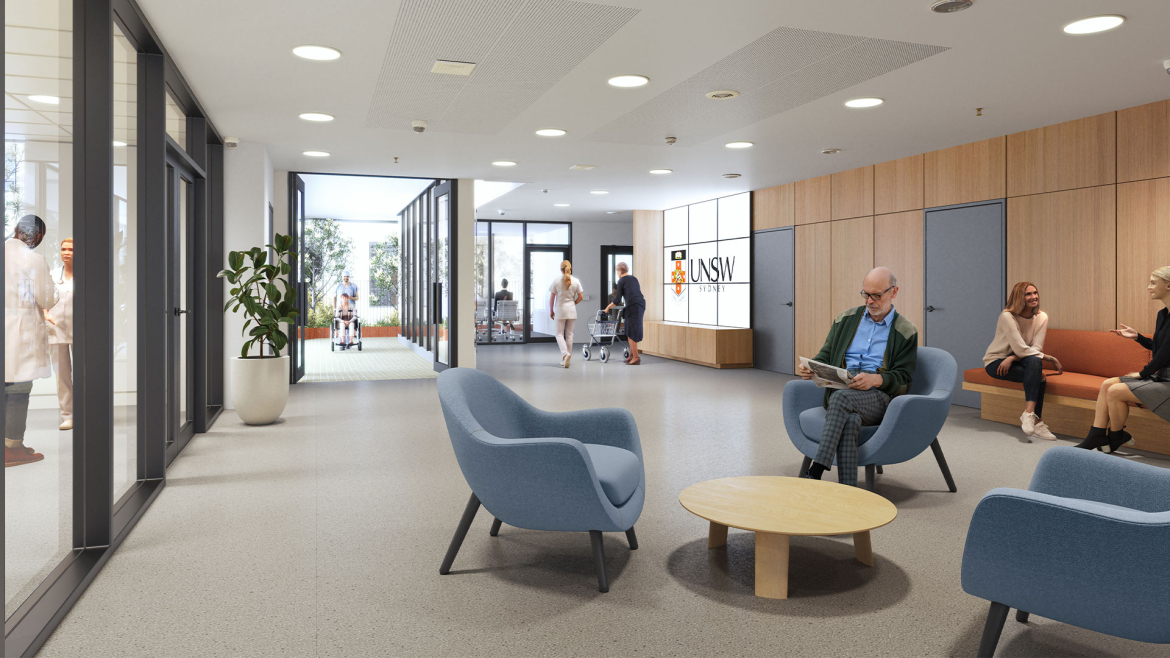Connected with Randwick’s new Prince of Wales Hospital Acute Services Building, UNSW Sydney houses state-of-the-art research, clinical innovation, biomedical and teaching facilities across 10 floors and approximately 5000m2 in a multipurpose space known as the Integrated Acute Services Building (IASB).
The integrated, co-located space with research, education, clinical and training facilities strengthens links between clinicians and researchers in real-time, creating a seamless physical connection between UNSW and the Randwick Health Campus.
The IASB includes dedicated research, teaching, innovation and collaboration spaces in addition to laboratories for clinical and translational research linked to the Acute Services Building. UNSW’s IASB facilities opened in mid-2024.
UNSW spaces aligned with hospital units to maximise collaboration
Facilities at the IASB align with work happening at the hospital, maximising the benefits of co-location to improve health outcomes for our community.
The ground floor is home to a Clinical Research & Innovation Facility (CRIF) and be home to outpatient research, clinical trials and multidisciplinary team space. Initially the space will pilot a Comprehensive Dementia Care facility.
Across from the hospital’s first floor operating theatres, IASB space prioritises medical technology ideation, bio-printing, rapid prototyping and testing laboratories.
On the second floor and near the hospital’s Central Sterile Supply Department, UNSW has space for clinical prototyping: co-design for implants, prosthetics, orthotics, devices, surgical robotics computational modelling. It includes a sample preparation laboratory for specimen reception and distribution, molecular, processing, short-term cryostorage.
The intensive care unit and medical assessment unit on level three links to UNSW’s data visualisation spaces, a connected health floor with co-working zones for data interfacing with hospital medical assessment unit.
Another PC2 laboratory on level four maximises links with the hospital’s haematology, oncology and sub-acute aged care units. It has shared services for clinical research as well as a haematology translational research space and high-end analytics lab for cell therapy and clinical trials for haematology and oncology patients.
On levels five through eight, UNSW has dedicated clinical education and research zones to encourage collaboration and learning. These spaces correspond to the hospital’s aged care and orthogeriatric, surgery, respiratory and spinal, stroke and clinical neurosciences units.
On level eight, UNSW has another secure research laboratory that can be used for future infectious disease research.





